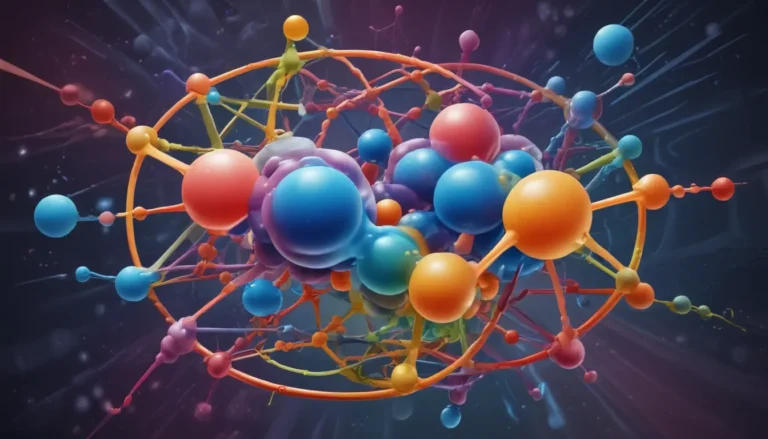A Note About Images: The images used in our articles are for illustration purposes only and may not exactly match the content. They are meant to engage readers, but the text should be relied upon for accurate information.
Are you curious about the incredible world of blood buffering? Blood plays a crucial role in our bodies, carrying essential nutrients and oxygen while removing waste products. But did you know that blood has a remarkable ability to maintain its pH balance through a process called blood buffering? In this article, we will delve into the fascinating realm of blood buffering and uncover 20 intriguing facts that will captivate your interest. From the bicarbonate buffer system to the importance of pH levels, you’ll discover the extraordinary mechanisms at work within your bloodstream.
Understanding Blood Buffer
Blood buffer refers to the body’s natural mechanism for maintaining pH balance and stability, essential for the optimal functioning of various bodily processes.
The Significance of pH Balance
The pH level of blood plays a critical role in ensuring the proper functioning of enzymes, proteins, and other essential molecules in the body, crucial for maintaining homeostasis.
The Bicarbonate Buffer System
One of the primary buffering systems in the blood is the bicarbonate buffer system, which regulates pH levels by controlling the concentration of carbon dioxide and bicarbonate ions.
The Role of Hemoglobin as a Buffer
Hemoglobin, the protein responsible for carrying oxygen in red blood cells, also acts as a buffer by binding with hydrogen ions and preventing drastic changes in pH.
Respiratory and Renal Regulation
The respiratory and renal systems work together to regulate blood pH. The respiratory system controls the elimination of carbon dioxide, while the kidneys regulate the reabsorption and excretion of bicarbonate ions.
Acidosis and Alkalosis
Imbalances in blood buffer systems can lead to acidosis (low pH) or alkalosis (high pH), which can have adverse effects on bodily functions.
The Buffering Capacity
The buffering capacity of blood refers to its ability to resist changes in pH, influenced by the concentration of buffering systems and the presence of other ions in the blood.
Supporting Acid-Base Balance
Blood buffer systems play a crucial role in maintaining the acid-base balance in the body, counteracting the effects of acids and bases to keep the pH within a narrow range.
The Carbonic Acid-Bicarbonate Buffer System
The carbonic acid-bicarbonate buffer system, the most important buffering system in the blood, involves the reversible reaction between carbonic acid and bicarbonate ions.
Buffering in Various Body Fluids
While blood buffer systems are vital, other body fluids like cerebrospinal fluid and interstitial fluid also possess buffering capacities to maintain pH balance.
Buffering in Respiratory Disorders
Disruptions in blood buffer systems can contribute to respiratory disorders such as chronic obstructive pulmonary disease (COPD) and asthma, affecting the ability to maintain proper pH levels.
Buffering and Physical Exercise
During intense physical activity, blood buffer systems help regulate the buildup of lactic acid, preventing excessive acidification and maintaining pH balance.
Buffering and Digestion
Buffering systems in the blood also play a role in the digestion process, neutralizing acidic products from the stomach that enter the small intestine.
Medications Impacting Blood Buffer
Certain medications, such as antacids and pH regulators, can impact the blood buffer system by altering pH levels or interfering with the ability to maintain equilibrium.
Exploring Buffer Theories
Various buffer theories, including the Henderson-Hasselbalch equation, explain the relationship between the concentrations of acid and base forms in a buffer system.
The Buffer System in Bone
Blood buffer systems work alongside the buffer system in the bones, involving the release and absorption of calcium ions to regulate pH balance.
Acid-Base Imbalance and Health Conditions
Imbalances in blood buffer systems can be associated with health conditions like metabolic acidosis, respiratory alkalosis, and renal tubular acidosis.
Dietary Influence on Blood Buffer
Dietary factors, such as consuming acidic or alkaline foods and beverages, can influence pH levels and the efficiency of blood buffer systems.
Cellular Metabolism and Buffering
Efficient blood buffering is essential for optimal cellular metabolism, ensuring the balance of ions and pH levels required for enzymatic reactions.
The Role in Acid-Base Disorders
Blood buffer systems are extensively studied in the context of acid-base disorders, aiding in the diagnosis and treatment of conditions associated with altered pH levels.
In conclusion, understanding the concept of blood buffering is crucial for comprehending how our bodies maintain optimal pH levels and ensure the proper functioning of various bodily systems. The intricate interplay between acids, bases, and buffers in the blood helps stabilize pH levels, preventing them from becoming too acidic or alkaline.
Blood buffering also plays a vital role in maintaining homeostasis, regulating enzyme activity, and ensuring the efficient transportation of oxygen and carbon dioxide throughout the body. It is fascinating to learn how the body achieves this remarkable balance through the bicarbonate buffering system, the respiratory system, and the kidneys.
Unravel the mysteries of life with our captivating articles! Dive into the world of biochemistry and physiology, where chemical reactions and bodily functions intertwine to create the miracle of human existence. Join us on this fascinating journey of discovery and expand your knowledge today!
FAQs
-
What is a blood buffer?
A blood buffer is a chemical compound that resists changes in pH levels by accepting or releasing hydrogen ions, maintaining the optimum pH range in the blood. -
What are the main types of blood buffers?
The two main types of blood buffers are the bicarbonate buffering system, operating in the bloodstream, and hemoglobin buffering, occurring within red blood cells. -
How does the bicarbonate buffer system work?
The bicarbonate buffer system involves the conversion of carbon dioxide (CO2) into carbonic acid (H2CO3) and ultimately to bicarbonate ions (HCO3-) and hydrogen ions (H+), regulating blood pH. -
What is the role of the respiratory system in blood buffering?
The respiratory system regulates blood pH by controlling the levels of carbon dioxide (CO2) in the blood, with carbon dioxide reacting to form carbonic acid, releasing hydrogen and bicarbonate ions. -
How do the kidneys contribute to blood buffering?
The kidneys regulate the levels of bicarbonate ions (HCO3-) in the blood, adjusting the reabsorption or excretion based on the body’s needs to maintain the acid-base balance.
Our commitment to delivering trustworthy and engaging content ensures the highest standards of accuracy and reliability. We invite you to explore and learn with us, as our dedicated editors meticulously review each submission to provide you with fascinating and credible facts. Trust in our commitment to quality and authenticity as you expand your knowledge alongside us.






